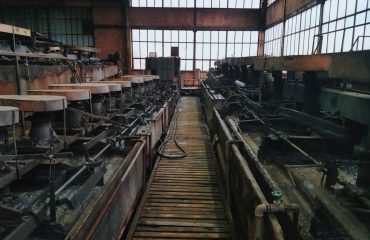In today’s competitive global market, maintaining high-quality products and efficient production processes is paramount. Achieving and maintaining ISO compliance is no longer a luxury but a necessity for businesses aiming for sustained growth and market leadership. This comprehensive guide will explore the key aspects of implementing and maintaining ISO-compliant production processes, focusing on the benefits and practical steps involved.
Understanding ISO Standards and Their Relevance to Production
The International Organization for Standardization (ISO) develops and publishes international standards. While many ISO standards exist, ISO 9001:2015 (Quality Management Systems) is the most widely recognized and relevant for production processes. This standard provides a framework for establishing, implementing, maintaining, and continually improving a quality management system (QMS). Adherence to ISO 9001 demonstrates a commitment to quality, customer satisfaction, and continuous improvement, significantly enhancing a company’s credibility and competitiveness. Compliance involves meticulously documenting processes, implementing controls, and regularly auditing performance against established benchmarks. This rigorous approach minimizes errors, reduces waste, and improves overall efficiency.
Implementing a Robust Quality Management System (QMS)
The foundation of ISO-compliant production lies in a robust QMS. This system encompasses all aspects of production, from initial design and procurement to final product delivery and post-sale service. Key elements include:
- Documented Procedures: Every process, from material handling to quality checks, must be clearly documented with step-by-step instructions and responsibility assignments. This ensures consistency and repeatability.
- Internal Audits: Regular internal audits are crucial to identify areas of non-compliance and potential improvement. These audits should be conducted by trained personnel and documented thoroughly.
- Corrective and Preventive Actions (CAPA): A well-defined CAPA process is essential for addressing non-conformances and preventing their recurrence. This involves identifying root causes, implementing corrective actions, and monitoring their effectiveness.
- Management Review: Regular management reviews provide a high-level assessment of the QMS’s effectiveness. These reviews should involve top management and address key performance indicators (KPIs) related to quality and efficiency.
- Continuous Improvement: The ISO 9001 standard emphasizes continuous improvement. Regularly reviewing processes, seeking feedback from employees and customers, and implementing improvements are integral to maintaining compliance and enhancing performance.
The Role of Risk Management in ISO-Compliant Production
ISO 9001 emphasizes proactive risk management. Identifying and mitigating potential risks throughout the production process is essential for preventing defects, delays, and other issues. This involves:
- Risk Assessment: Conducting thorough risk assessments to identify potential hazards and vulnerabilities in all stages of production.
- Risk Mitigation Strategies: Developing and implementing strategies to reduce or eliminate identified risks. This might involve process improvements, employee training, or investment in new equipment.
- Monitoring and Review: Regularly monitoring the effectiveness of risk mitigation strategies and adjusting them as needed. This ensures that the QMS remains robust and adaptive.
Ensuring Traceability and Control Throughout the Production Chain
Maintaining complete traceability is crucial for ISO compliance. This means being able to track every component, material, and process step throughout the entire production chain. Effective traceability allows for:
- Identifying the source of defects: If a problem arises, traceability allows for quick identification of the root cause, facilitating swift corrective action.
- Meeting regulatory requirements: Many industries have stringent traceability requirements, and ISO compliance helps ensure adherence.
- Improving efficiency: Precise tracking of materials and processes can help optimize inventory management and reduce waste.
- Enhancing product recall management: In the event of a product recall, traceability simplifies the process of identifying and isolating affected products.
This often involves implementing robust tracking systems, such as barcodes, RFID tags, or specialized software.
Maintaining ISO Certification and Continuous Improvement
Achieving ISO certification is a significant milestone, but it’s not a one-time event. Maintaining certification requires ongoing effort and commitment. This involves:
- Regular Internal Audits: Continuously monitoring the effectiveness of the QMS through regular internal audits.
- Management Review: Regularly reviewing the performance of the QMS and identifying areas for improvement.
- External Audits: Undergoing regular external audits by a certified certification body to verify compliance with the ISO standard.
- Corrective and Preventive Action (CAPA): Implementing a robust CAPA system to address any non-conformances identified during audits.
- Employee Training: Providing ongoing training to employees to ensure they understand and adhere to the QMS.
Continuous improvement should be a core principle, constantly striving for greater efficiency, reduced waste, and enhanced quality. Regularly reviewing processes, implementing new technologies, and seeking employee feedback are all integral to this process.
Implementing ISO-compliant production processes requires a significant commitment, but the benefits are substantial. Enhanced quality, increased efficiency, improved customer satisfaction, and enhanced market credibility are just some of the rewards. By embracing a culture of quality and continuous improvement, businesses can gain a significant competitive advantage in the global marketplace.
Tags: ISO compliance, production processes, quality management, ISO 9001, manufacturing




